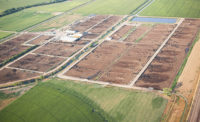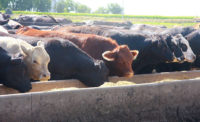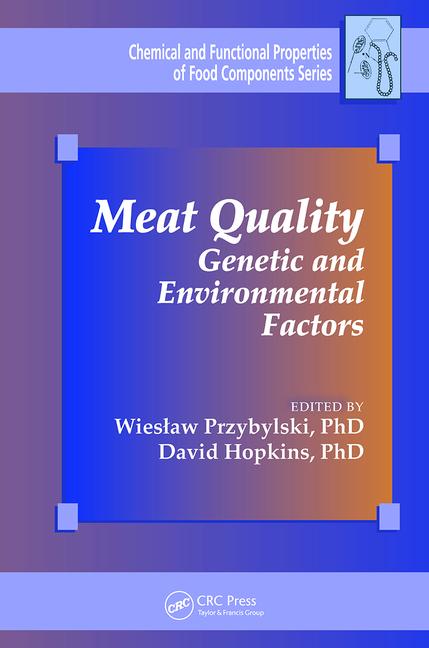That is the dilemma meat and poultry processors have been grappling with since the USDA Food Safety and Inspection Service (FSIS) instituted tougher standards in 2005 (and which are due to be further enhanced shortly).
However, the industry theory is that the more hurdles deadly bacteria have to jump, the more likely it is that they will be eliminated before reaching a consumer’s plate, which is why meat and poultry processors alike have renewed their focus on innovative pre-harvest intervention technology in recent years — to the tune of $550 million each year from the beef industry alone, reports the National Beef Cattlemen’s Association.
“I believe in the multiple-hurdle process,” says H. Russell Cross, Ph.D., professor and interim head, Department of Animal Science, Texas A&M University. “For HACCP [Hazard Analysis & Critical Control Points] to be most effective, several interventions should be in place from the pre- and post-harvest sectors.”
Control approaches in the pre-harvest area have focused on two areas: changing management strategies such as feed, equipment and water, and intervention strategies such as vaccines or phages, viruses that attack bacteria.
With feed additives, processors are already using direct-fed microbials (DFM), which can be composed of yeast, bacterial cultures or other non-pathogenic microorganisms, to compete with target pathogens like E. coli O157.
After being fed to the animals, DFM produce compounds as byproducts of their growth (such as organic acids like lactic acid or volatile fatty acids) that create an unfavorable environment for pathogens, says Mandy Carr Johnson, Ph.D., executive director of beef safety research, National Cattlemen’s Beef Association (NCBA).
“Additionally, sodium chlorate can be added to feed for its antimicrobial effects,” says Johnson. “Research has shown this process reduces the populations of the pathogens in the GI [gastrointestinal] tract and on the hide of cattle. This product is currently under review by the Food and Drug Administration.”
Johnson explains that the intracellular bacterial enzyme nitrate reductase is found in bacteria like E. coli and Salmonella to help them respire, or “breathe,” in an environment without oxygen, such as the GI tract of cattle.
“However, this enzyme does not distinguish nitrate, which it uses for the respiration process, from chlorate, which when broken down by the enzyme into chlorite is toxic to the cell,” she notes.
Sodium chlorite supplements have a lot of potential because they are not expensive, show positive lab data results and can address any of the E. coli and Salmonella pathogens, according to Keith Belk, professor of animal science, Colorado State University.
“We’re very excited about this one,” he says. “The issue with many pre-harvest intervention technologies, however, is the approval process. It’s a very slow process because of the drug application requirements.”
Vaccinating against trouble
Different approaches have been evaluated for pre-harvest vaccines that target pathogens. One approach is to focus on interrupting a pathogen’s ability to acquire nutrients from the environment.
“Siderophores are proteins excreted by bacteria to obtain iron from the environment, which for some pathogens is the intestinal tract of cattle,” says Johnson. “The SRP [siderophore receptor and porin] vaccine targets this protein and disrupts iron transport into the bacterial cell which results in cell death. Research has shown the use of this type of vaccine can reduce fecal concentrations and prevalence of E. coli O157 significantly.”
This product is conditionally licensed in the U.S. and large field trials have been conducted and continue to be conducted to provide additional information for its license.
Additionally, vaccines have been produced that target proteins secreted by pathogens like E. coli O157 from attaching to the inside of the GI tract of cattle.
“The vaccine disrupts the proteins, preventing the attachment,” says Johnson. “Research has shown this type of vaccine to also be effective at reducing shedding of these pathogens by treated cattle.”
This product is licensed in Canada and is pending conditional license in the U. S. Belk notes that the big problem with vaccines is cost and whether they produce a great enough response to justify that cost.
A relatively new technology, bacteriophages (or phages), is gaining interest with the beef industry. Popular with scientists from the old Soviet Union, typical phages have hollow heads (where the phage DNA or RNA is stored) and tunnel tails, the tips of which have the ability to bind to specific molecules on the surface of their target bacteria. The viral DNA is then injected through the tail into the host cell, where it directs the production of progeny phages often over a hundred in half an hour. These young phages burst from the host cell (killing it) and infect more bacteria. They would be used to kill any pathogens on the animal hide before it enters the harvest facility.
“The consensus among microbiologists is that phages do not have any known adverse effects on humans, animals or the environment, and tend to gravitate toward wherever bacteria live,” says Cross. That said, other feedback on phages has been more iffy, says Belk.
“It’s a developing and evolving area, but it’s not quite there yet,” he says. “For example, think of any cold virus or the swine flu: genetic mutations change so quickly that a year from now the same phage will be different. That’s why researchers are working with a cocktail of phages to attack E. coli.”
Vaccine and phage technology exists, says Cross, but the question remains whether it can be effectively implemented.
“Some vaccines have shown 40 percent to 50 percent reduction in Salmonella levels in feces,” he explains. “Many in the industry suggest that more open and commercial testing is necessary to improve consistency and reduce costs.”
Keeping a clean coat
According to Cross, most people in the industry agree that 90 percent or more of its pathogen problems actually come from the surface of the hide and what is transferred to the carcass. However, processors are not taking advantage of chemical dehairing and carcass irradiation as two good opportunities for interventions.
Put simply, chemical dehairing removes everything from the surface of the hide so almost no bacteria can survive. The process has been simplified and improved since it was first introduced, he says, and the cost is more reasonable as well.
Carcass irradiation has so far been denied by FSIS due to concerns over uneven applications — and thus uneven dosages — but new technology exists that provides a uniform application of e-beams (and dosage), he says.
“I think the industry should push for another look,” Cross says. “Each of these systems provides multiple-log pathogen reductions early in the slaughter process and greatly enhances the efficacy of the acid applications and hot water pasteurizations when applied later in the HACCP process.”
Validating carcass washes
The last two years have seen an increase in processors attempting to validate their carcass-washing systems, largely due to upcoming FSIS validation guidelines, says Beck. Also, many ready meat processors are being proactive with effective interventions.
“I’ve seen a lot of adjustments at every plant to improve their system before the FSIS guidelines are issued; for example, in areas such as chemicals, temperatures, pressure, concentrations and flow rates,” he says. He adds that carcass cabinets are being re-designed and engineered for hide-on cleaning, and their chemicals are being re-evaluated.
“Improvements have been made in the area of more effective hot-water pasteurization cabinets,” says John Ruby, Ph.D., head, technical services, JBS USA Beef Division. “In addition, newer antimicrobial technologies such as bromine-based wash applications have shown to also be effective.”
Remote video auditing (RVA) has also proven a very effective tool in improving the dressing procedure and therefore preventing cross-contamination from hide to carcass during removal of the hide, says Ruby.
“Improvements are still needed so the intervention technology can be effective at reducing the target organism,” he says. “It needs to have an application system that is simple to use, safe, and easy to monitor; and there needs to be an efficient way to validate the interventions’ effectiveness.”
Trimming and steam-vacuuming are still effective interventions for visible contamination, as are rinses and steam pasteurization on contamination that is not visible, says Johnson.
“The key changes over time have been not only identifying new compounds or technologies to implement in place of other technologies, but also modifications to combinations of current technologies to make them more effective,” she says. “A good example is an organic acid may have been used alone years ago, but now it is used in combination with other interventions but at a different concentration or temperature than originally used.”
So far, Cross says, Cargill has shown the most interest in carcass washes, followed by JBS and Tyson, although published research provides mixed results for hide-on washes or interventions.
“Cargill may be the only packer using full hide-wash systems,” he says. “We hear of less than 2 log reductions with sodium hydroxide, but that has not been confirmed. Bottom line, the uses of hide washes are showing a less than 2 log reduction at a likely cost of $3 a head.”
Preparing for the future
As the industry awaits the FSIS’ new proposed pre-harvest guidelines, many companies are well-suited to handle them in stride.
“The big companies are already ahead of the government,” says Belk. “To their credit, they have spent millions evaluating their pre-harvest tools — which is not to say they are fully implemented yet.”
However, he still voices the concern“I’d contend that the meat industry is ahead of us with pre-harvest intervention tactics, but E. coli is at the root of that focus,” says Alling Yancy, Ph.D., vice president, food safety and production programs for the U.S. Poultry and Egg Association.
Instead, the poultry industry has mainly focused its food-safety efforts on post-harvest production at the processing plant, he says, because it is the last step before the product reaches consumers and can be more tightly controlled and sterilized, compared to hatcheries and broiler houses, which handle live animals.
“It’s not possible to eliminate Salmonella or Campylobacter, but it’s a noble and reasonable goal to consider how we can minimize them as much as possible before the bird carcasses enter the plant,” he says.
To that end, the International Poultry Expo (IPE) hosted a Pre-Harvest Food Safety Conference (developed by the U.S. Poultry & Egg Association, the National Chicken Council, the North American Meat Processors Association, Auburn University and the University of Georgia) in January to educate processors on the latest technologies and procedures.
“Our members tell us that their customers are asking more questions about food-safety procedures prior to the processing plant, and FSIS and the FDA are looking into pre-harvest interventions more as well,” notes Yancy.
Vaccines — whether off the shelf or autonomous — for hens are the only consistent pre-harvest method employed by most processors, but their technology is constantly being tweaked to yield greater results, he says.
Another tactic is competitive exclusion, in which day-old birds are fed a naturally occurring, non-pathogenic bacteria substance to prevent harmful bacteria from colonizing or adhering to the chick’s undeveloped gastrointestinal tract. The farm then also benefits by having fewer Salmonella-infected birds.
Phages, or viruses used to kill bacteria, are a new innovative technique but are not yet in high demand due to their potential complications, says Yancy.
“The FDA does not fast-track new technologies, and the often tedious application process can retard innovation,” he says. “There is some frustration in the industry that more technologies are not available.”that due to long approval process for new pre-harvest technology, the FSIS is giving recommendations without providing the tools to make them possible.
“One of the greatest limitations today is the lack of approved options for the industry to test in large settings,” agrees Kristina Butts, executive director of legislative affairs, NCBA. “There are multiple interventions that show remarkable pre-harvest opportunity on the research side, but these products have a challenge in navigating the approval process. Cattle producers need a variety of tools to utilize in the pre-harvest area.”
| Sidebar: Flying the Coop |
“I’d contend that the meat industry is ahead of us with pre-harvest intervention tactics, but E. coli is at the root of that focus,” says Alling Yancy, Ph.D., vice president, food safety and production programs for the U.S. Poultry and Egg Association.
Instead, the poultry industry has mainly focused its food-safety efforts on post-harvest production at the processing plant, he says, because it is the last step before the product reaches consumers and can be more tightly controlled and sterilized, compared to hatcheries and broiler houses, which handle live animals.
“It’s not possible to eliminate Salmonella or Campylobacter, but it’s a noble and reasonable goal to consider how we can minimize them as much as possible before the bird carcasses enter the plant,” he says.
To that end, the International Poultry Expo (IPE) hosted a Pre-Harvest Food Safety Conference (developed by the U.S. Poultry & Egg Association, the National Chicken Council, the North American Meat Processors Association, Auburn University and the University of Georgia) in January to educate processors on the latest technologies and procedures.
“Our members tell us that their customers are asking more questions about food-safety procedures prior to the processing plant, and FSIS and the FDA are looking into pre-harvest interventions more as well,” notes Yancy.
Vaccines — whether off the shelf or autonomous — for hens are the only consistent pre-harvest method employed by most processors, but their technology is constantly being tweaked to yield greater results, he says.
Another tactic is competitive exclusion, in which day-old birds are fed a naturally occurring, non-pathogenic bacteria substance to prevent harmful bacteria from colonizing or adhering to the chick’s undeveloped gastrointestinal tract. The farm then also benefits by having fewer Salmonella-infected birds.
Phages, or viruses used to kill bacteria, are a new innovative technique but are not yet in high demand due to their potential complications, says Yancy.
“The FDA does not fast-track new technologies, and the often tedious application process can retard innovation,” he says. “There is some frustration in the industry that more technologies are not available.”
“I’d contend that the meat industry is ahead of us with pre-harvest intervention tactics, but E. coli is at the root of that focus,” says Alling Yancy, Ph.D., vice president, food safety and production programs for the U.S. Poultry and Egg Association.
Instead, the poultry industry has mainly focused its food-safety efforts on post-harvest production at the processing plant, he says, because it is the last step before the product reaches consumers and can be more tightly controlled and sterilized, compared to hatcheries and broiler houses, which handle live animals.
“It’s not possible to eliminate Salmonella or Campylobacter, but it’s a noble and reasonable goal to consider how we can minimize them as much as possible before the bird carcasses enter the plant,” he says.
To that end, the International Poultry Expo (IPE) hosted a Pre-Harvest Food Safety Conference (developed by the U.S. Poultry & Egg Association, the National Chicken Council, the North American Meat Processors Association, Auburn University and the University of Georgia) in January to educate processors on the latest technologies and procedures.
“Our members tell us that their customers are asking more questions about food-safety procedures prior to the processing plant, and FSIS and the FDA are looking into pre-harvest interventions more as well,” notes Yancy.
Vaccines — whether off the shelf or autonomous — for hens are the only consistent pre-harvest method employed by most processors, but their technology is constantly being tweaked to yield greater results, he says.
Another tactic is competitive exclusion, in which day-old birds are fed a naturally occurring, non-pathogenic bacteria substance to prevent harmful bacteria from colonizing or adhering to the chick’s undeveloped gastrointestinal tract. The farm then also benefits by having fewer Salmonella-infected birds.
Phages, or viruses used to kill bacteria, are a new innovative technique but are not yet in high demand due to their potential complications, says Yancy.
“The FDA does not fast-track new technologies, and the often tedious application process can retard innovation,” he says. “There is some frustration in the industry that more technologies are not available.”







Report Abusive Comment